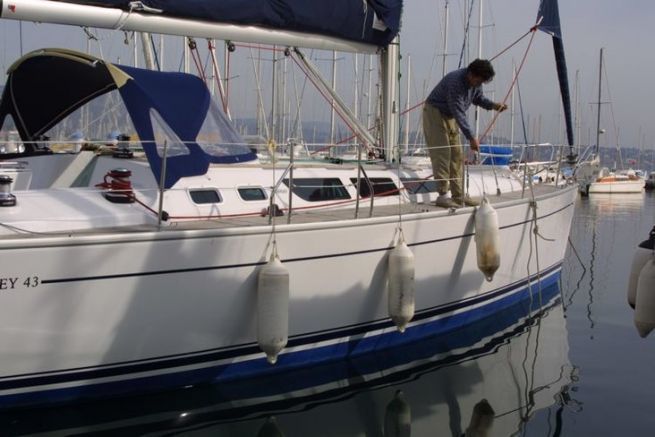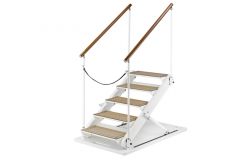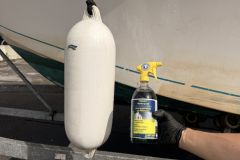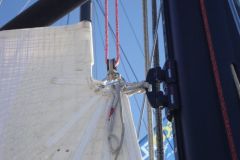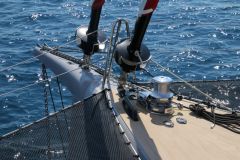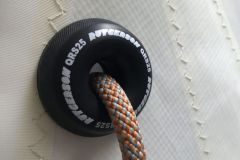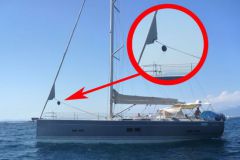The role of the fender is to protect the hull of our boats. Constructed mainly of PVC and inflated with air, they act as shock absorbers when the boat comes to rest on the quay or its neighbor. So it's essential to have a sufficient number of fenders, and models adapted to the size and shape of your hull.
How many fenders?
It is generally advisable to have at least 3 fenders per side (i.e. 6 for a boat), plus 2 others that can be arranged according to the specifics of the mooring.
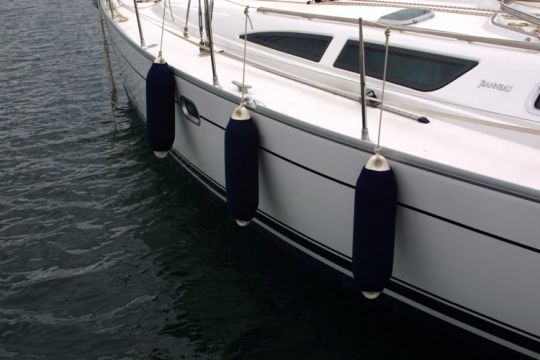
What size fender?
Like footwear, fenders come in different sizes. It's common to say that the fender should cover about 2/3 of the height of the freeboard.

What type of fender?
Fenders come in many shapes:
- Cylindrical : This is the most common, the boudin shape. It can be attached with a ring or with a through-rope. In both cases, you can choose to attach them vertically (the most common) or horizontally (when leaning against a post, for example).
- Spherical or ball : These are large, balloon-shaped fenders. They're invaluable as flying fenders during maneuvers. But they are also very bulky to store during navigation. On powerboats, where the bow can be very tulip-shaped, these fenders are also well suited to this part of the hull.
- Flat fender : Looking a bit like cushions, they're easy to store flat. While they are light and provide good protection, you must be wary of scratching. This type of fender can quickly become "sandpaper" as it rubs against the hull, dulling the shine of the gelcoat.
- Special fenders : To protect very specific parts of the boat, some fenders come in surprising shapes. You'll find bow fenders (boomerang-shaped or vertical protection), others shaped like the stern skirt... Some even have steps cut into the interior to facilitate access on board.

How to fit fenders?
To secure your fender, use a capstan knot or a dead turn and two half-keys. These knots can be gimped for easier release (but this should be avoided for long-term mooring).
Fenders should always be fastened as close to the deck as possible (avoid using dies), using stanchion feet or cleats. This keeps the rope length as short as possible, limiting fender oscillation, friction and wear.

Combining fenders
To protect the full height of a hull, it may be advisable to arrange fenders in staggered rows. Similarly, if a dock is badly damaged, fenders can be placed one above the other, or in a cluster.
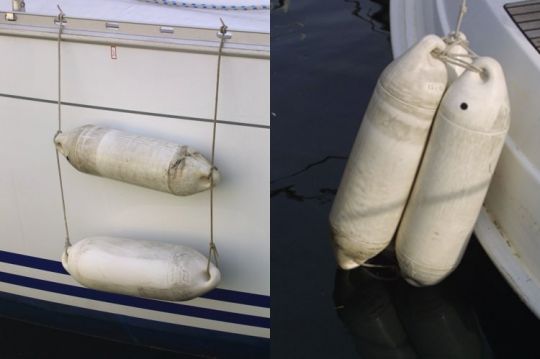
How to protect your shell?
If the fenders rub too much, they will eventually dull the gelcoat. To limit this inconvenience, you can protect your hull with a PVC sheet sandwiched between the fenders and the hull. You can also choose to fit your fenders with socks (sold by the metre and cut to the size of the fender).

 /
/ 